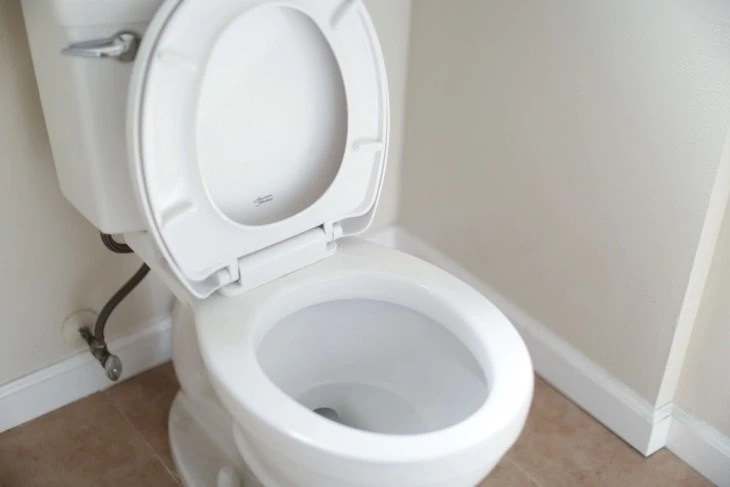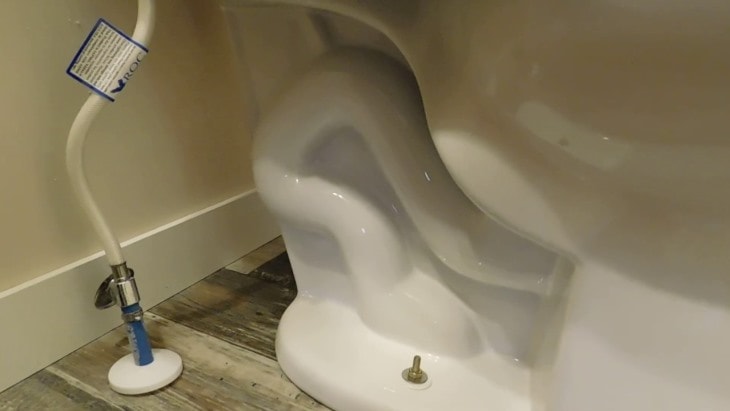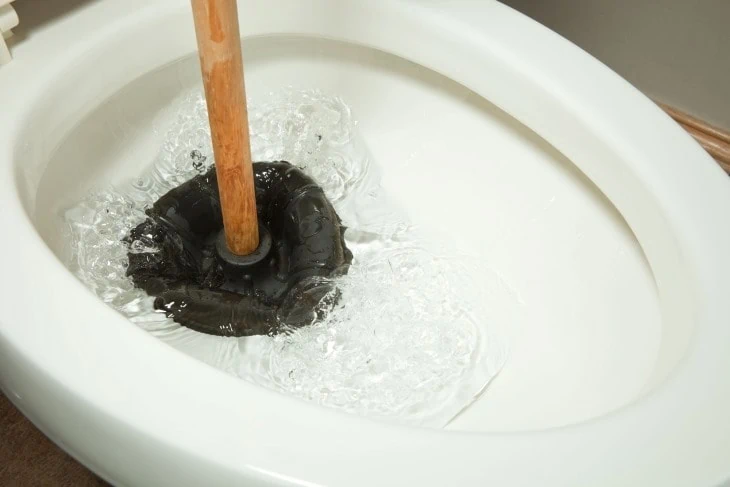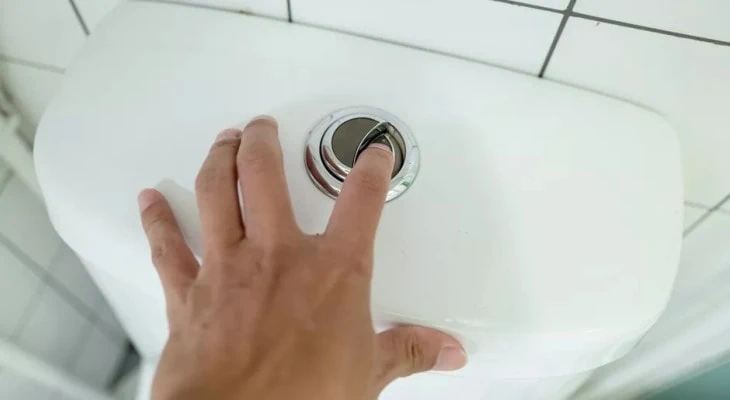It happens to the best of us. You finish your business, but when you go to flush, you are greeted with a panic-inducing sight of waste returning into the toilet. Repeated attempts at flushing aren’t helpful. What do you do now?
There are several reasons why your toilet flushes, but poop comes back into the bowl. It is most commonly an issue with your sewer pipes, and the fix is going to depend on where the problem is throughout your plumbing.
Table of Contents
Common Reasons for Toilet Backflow & Clogs

To find the solution, you need to diagnose the problem first. Some remedies are quick, while others may need the help of an expert. Your clogs could be caused by a number of things.
Flushable Wipes and Sanitary Products
Feminine hygiene products and flushable toilet wipes aren’t as safe to flush as manufacturers would want you to believe. Even though these products are marketed as “safe for plumbing”, they break down at a far slower rate than regular toilet paper.
This is especially true in septic systems, where a layer of these products forms on top of the contents in your septic tank. Stop flushing these products immediately to avoid further damage to your plumbing.
S-trap or P-trap Blockage

On the back of your toilet is a curved pipe connecting to your wall – this is called the s-trap or p-trap, and they both function in the same way. Older homes and toilets will have an s-trap, but modern plumbing no longer allows these to be installed, so they were replaced with p-traps.
S-traps are outlawed by most building code standards now because they allow methane gasses to re-enter the residence. This is because the water that is supposed to collect in the bottom of the trap sometimes gets siphoned out due to pressure.
Regardless of the type of pipe you have, blockages can occur at any point but most usually happen at the lowest bent point.
Sewer Pipe Issues
The problem could be farther away from your toilet and in your actual sewer pipes. Unfortunately, all underground sewer pipes are your responsibility, even those that run past your property line.
Tree roots are the main culprit for sewer line issues as they can choke out pipes or puncture them. It’s also possible that settling and shifting soil is to blame, especially on newer laid pipes.
City Main Blockage
In a residential area, your lateral sewer lines connect to the city’s main line. If a blockage in the main line is causing the waste to come back into the toilet, you need to call the city or municipality as this is their responsibility.
Fixing Clogged Pipes
As with most problems that could have more than one cause and solution, you should always start with the easiest fix and work your way up to more complicated ones.
Homemade Fixes for Clogged Pipes
Sometimes the fix is as simple as running a few household ingredients through your toilet. A mixture of salt, vinegar, and Borax is a fairly strong drain cleaner.
If you want to keep the chemicals to a minimum, try a pressure flush with dish soap and hot water. Combine them together in a large stock pot and dump them directly into your toilet bowl. It should “flush” on its own due to pressure, but you may need to coax it along with the flusher.
Hot water is essential as it helps to dissolve any fats or oils that may have accumulated in your pipes. You may need to repeat this several times to eliminate the blockage completely.
Unclogging Tools

Your toilet may need a good solid plunge to push anything stuck in your traps out to the main line. You can also purchase a toilet snake from most home improvement stores and snake the lines yourself if the plunger doesn’t work.
A toilet snake is a mini augar that is threaded through your pipes and turned. This helps to either snag an obstruction and pull it out or break it up so water can move freely through your pipes again.
If the home remedies and unclogging tools don’t solve your issue, you may need to hire a professional to come inspect your lines. They can usually run a small camera through your pipes to identify where the problem is.
Professional Fix: Hydro-Jetting
This solution sounds pretty cool – and it kind of is. A professional plumber will jet a stream of water at a high PSI through your pipes to blast away any kind of debris or clog. It’s considered non-invasive and can be done quickly, but you’ll need a professional for this since they use speciality tools.
Professional Fix: Sewer Line Fix
Unfortunately, narrowing down your issue to a damaged sewer line means you will be spending a pretty penny to fix it. Professionals have two methods of repairing sewer lines – traditional trenching and trenchless repair.
Traditional trenching is just as it sounds. It involved digging up the damaged area of the pipe and repairing or replacing it. This is the more costly option as it involves digging and backfilling.
Trenchless sewer repair is a fairly new (and constantly improving) option for repairing sewer lines without digging up your yard. They essentially “feed” a new pipe through the old one from either end.
The benefit of trenchless repair is that it is usually cheaper and quicker than traditional trenching. But here’s to hoping you won’t need to resort to a full-line replacement in the first place!
Final Thoughts
Because there are so many parts involved in a plumbing system, identifying and fixing a toilet backflow issue can seem arduous. Advances in plumbing are thankfully cutting down on the problem areas, though, and you’ll often find more issues in older plumbing setups.
If you feel you’ve identified the problem in your lines, try some home remedies to unclog your toilet and use a toilet snake or a plunger if necessary. Unfortunately, some issues are just too big to take the DIY route so don’t hesitate to call a plumber if you aren’t able to solve the problem.


Excellent information. Especially the sequence from easy to difficult. I hope one of the fixes will get toilet to flush correctly. Thanks for the tips.